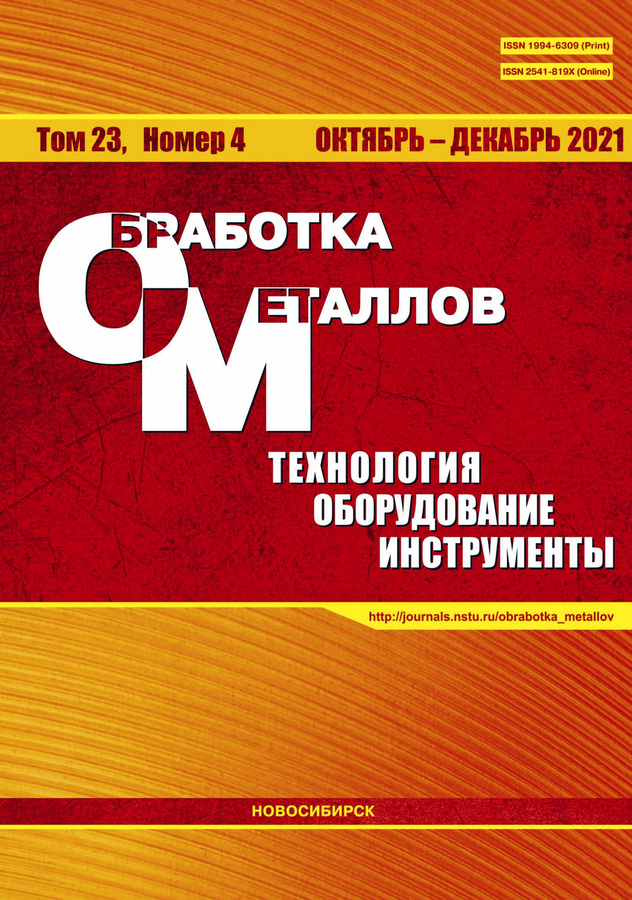Investigation of complex surfaces of propellers of vehicles by a mechatronic profilograph
- Authors: Vasilev S.A.1, Alekseev V.V.1, Fedorova A.A.1, Lobanov D.V.1
-
Affiliations:
- Issue: Vol 23, No 4 (2021)
- Pages: 65-78
- Section: EQUIPMENT. INSTRUMENTS
- URL: https://bakhtiniada.ru/1994-6309/article/view/301961
- DOI: https://doi.org/10.17212/1994-6309-2021-23.4-65-78
- ID: 301961
Cite item
Abstract
About the authors
S. A. Vasilev
Email: Vsa_21@mail.ru
D.Sc. (Engineering), Associate Professor, I. N. Ulianov Chuvash State University, 15 Moskovsky Prospect, Cheboksary, 428015, Russian Federation, Vsa_21@mail.ru
V. V. Alekseev
Email: av77@list.ru
D.Sc. (Engineering), Associate Professor, I. N. Ulianov Chuvash State University, 15 Moskovsky Prospect, Cheboksary, 428015, Russian Federation, av77@list.ru
A. A. Fedorova
Email: e_a_a@mail.ru
I. N. Ulianov Chuvash State University, 15 Moskovsky Prospect, Cheboksary, 428015, Russian Federation, e_a_a@mail.ru
D. V. Lobanov
Email: lobanovdv@list.ru
D.Sc. (Engineering), Associate Professor, I. N. Ulianov Chuvash State University, 15 Moskovsky Prospect, Cheboksary, 428015, Russian Federation, lobanovdv@list.ru
References
- Feature-based reverse modeling strategies / Y. Ke, S. Fan, W. Zhu, A. Li, F. Liu, X. Shi // Computer-Aided Design. – 2006. – Vol. 38, iss. 5. – P. 485–506. – doi: 10.1016/j.cad.2005.12.002.
- Jeyapoovan T., Murugan M. Surface roughness classification using image processing // Measurement. – 2013. – Vol. 46 (7). – P. 2065–2072. – doi: 10.1016/j.measurement.2013.03.014.
- Lushnikov N., Lushnikov P. Methods of assessment of accuracy of road surface roughness measurement with profilometer // Transportation Research Procedia. – 2017. – Vol. 20. – P. 425–429. – doi: 10.1016/j.trpro.2017.01.069.
- Non-contact surface roughness measurement of crankshaft journals using a super-continuum laser / V.V. Alexander, H. Deng, M.N. Islam, F.L. Terry // Conference on Lasers and Electro-Optics 2010. – San Jose, CA, 2010. – P. AFA3. – doi: 10.1364/CLEO_APPS.2010.AFA3.
- Rao C.B., Raj B. Study of engineering surfaces using laser-scattering techniques // Sadhana. – 2003. – Vol. 28, pt. 3–4. – P. 739–761. – doi: 10.1007/BF02706457.
- Abidin F.Z., Hung J., Zahid M.N. Portable non-contact surface roughness measuring device // IOP Conference Series: Materials Science and Engineering. – 2019. – Vol. 469. – P. 012074. – doi: 10.1088/1757-899X/469/1/012074.
- Kiran R., Amarendra H.J., Lingappa S. Vision system in quality control automation // MATEC Web of Conferences. – 2018. – Vol. 144. – P. 03008. – doi: 10.1051/matecconf/201814403008.
- Shih F.Y. Image processing and pattern recognition: fundamentals and techniques. – Piscataway, NJ: IEEE Press; Hoboken, NJ: Wiley, 2010. – 537 p. – ISBN 978-0-470-40461-4.
- Wang T., Groche P. Sheet metal profiles with variable height: numerical analyses on flexible roller beading // Journal of Manufacturing and Materials Processing. – 2019. – Vol. 3 (1). – P. 19. – doi: 10.3390/jmmp3010019.
- Stoudt M., Hubbard J.B. Analysis of deformation-induced surface morphologies in steel sheet // Acta Materialia. – 2005. – Vol. 53 (16). – P. 4293–4304. – doi: 10.1016/j.actamat.2005.05.038.
- Разработка и исследование профилографа для измерения отклонений формы поверхности изделий методом лазерного спиралевидного сканирования / С.А. Васильев, В.В. Алексеев, М.А. Васильев, А.А. Федорова // Обработка металлов (технология, оборудование, инструменты). – 2020. – Т. 22, № 4. – С. 71–81. – doi: 10.17212/1994-6309-2020-22.4-71-81.
- Simulation of channel development on the surface of agrolandscapes on slopes / I.I. Maksimov, V.I. Maksimov, S.A. Vasil’;ev, V.V. Alekseev // Eurasian Soil Science. – 2016. – Vol. 49, iss. 4. – P. 475–480. – doi: 10.1134/S1064229316040074.
- Васильев С.А., Алексеев В.В., Речнов А.В. Экспресс-метод количественной оценки пожнивных остатков на поверхности почвы // Аграрный научный журнал. – 2015. – № 9. – С. 11–13.
- Hockauf R., Grove T., Denkena B. Prediction of ground surfaces by using the actual tool topography // Journal of Manufacturing and Materials Processing. – 2019. – Vol. 3 (2). – P. 40. – doi: 10.3390/jmmp3020040.
- Vasiliev S., Kirillov A., Afanasieva I. Method for controlling meliorative technologies on sloping cultivated lands using large scale profilometer // Engineering for Rural Development. Proceedings. – 2018. – Vol. 17. – P. 537–542.
- Васильев С.А. Разработка метода и профилографа для оценки мелиоративных технологий на склоновых агроландшафтах // Известия Нижневолжского агроуниверситетского комплекса: наука и высшее профессиональное образование. – 2016. – № 3. – С. 220–226.
- Васильев С.А. Обоснование конструктивно-технологических параметров профилографов для контроля мелиоративных технологий на склоновых агроландшафтах // Научный журнал Российского НИИ проблем мелиорации. – 2016. – № 4. – С. 40–54.
- Campana C., Moslehpour S. Non contact surface roughness measurement instrumentation // American Society for Engineering Education. – 2007. – AC 2007-2557. – P. 12.1107.
- Development and verification of a one-step-model for the design of flexible roll formed parts / P. Groche, A. Zettler, S. Berner, G. Schneider // International Journal of Material Forming. – 2010. – Vol. 4 (4). – doi: 10.1007/s12289-010-0998-3.
- Schilling R.J. Fundamentals of robotics: analysis and control. – New Delhi: Prentice Hall, 2005. – ISBN 81-203-1047-0.
- Yanyushkin A.S., Lobanov D.V., Arkhipov P.V. Research of influence of electric conditions of the combined electro-diamond machining on quality of grinding of hard alloys // IOP Conference Series: Materials Science and Engineering. – 2015. – Vol. 91. – P. 012051. – doi: 10.1088/1757-899X/91/1/012051.
Supplementary files






